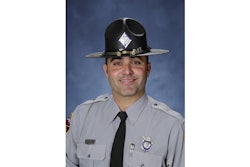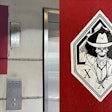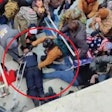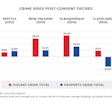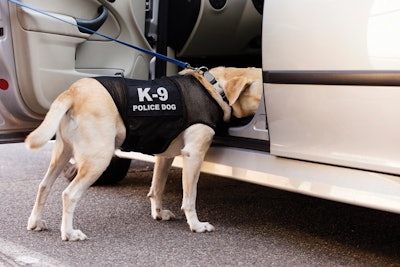 At 12 minutes into the stop, the dog alerted to drugs in the car and the officers seized a half pound of heroin.Photo: Getty Images
At 12 minutes into the stop, the dog alerted to drugs in the car and the officers seized a half pound of heroin.Photo: Getty Images
Traffic stops are the bread and butter of proactive patrol activities and often lead to more than just the original traffic violation. The most common problem officers face when dealing with a traffic stop is how do they legitimately extend the stop when they believe there may be more to the situation than a simple speeding violation or other motor vehicle offense. The Supreme Court refers to this as the "Rodriguez moment." That is to say, the point at which the original purpose of the traffic stop ended.
At that point, prolonging the stop can only be supported by articulable facts that rise to the level of Reasonable Suspicion. More importantly, those facts must be known to the officer at the moment the stop is prolonged.
Let's look at a case out of the 7th Circuit. In United States v Lewis (United States v Lewis, 2019 U.S. App. LEXIS 9843—7th Cir. IL April 3, 2019), a traffic stop turned into a seizure of half of a pound of heroin. Let's take a look at how the officer fared in this case.
The Traffic Stop
In January 2017, Illinois State Police Officer Timothy Sweeney observed the defendant, Arriba Lewis, driving southbound on Interstate 55, following another vehicle closely in front of him. He was sitting in a "stiff and ridged" manner, and "leaning back" in the driver seat. Officer Sweeney was going to trail Lewis' vehicle but pulled off to assist another trooper who had a vehicle pulled over.
Upon learning that his assistance was not needed, Sweeney resumed his pursuit of Lewis and quickly caught up with the vehicle. The officer's in-vehicle video system recorded the entire incident, including the times as described by the court and Lewis' Charger following a semi-truck very closely.
Sweeney measured the distance between the semi-truck and Lewis' car by starting a stop-watch built into the radar unit and using a mile-marker to determine the time between when the semi-truck passed the marker and the Charger passed the marker. Sweeney then initiated a traffic stop after determining this time to be 1.2 seconds.
Sweeney advised Lewis he pulled him over for following the truck too closely. Sweeney then advised Lewis that he would need to sit in the back seat of the cruiser while the officer prepared the warning citation. While checking Lewis' license, the officer learned Lewis was on probation for a cocaine conviction. Sweeney then asked Lewis where he was headed, and Lewis replied that he was going to St. Louis to pick up his son at college. Less than a minute later, Lewis claimed he was headed to pick up his 26-year-old son at his work because he had a fight with his girlfriend.
Lewis then asked Sweeney to explain the rules regarding following too closely. At this point the stop had lasted five minutes and, based on his observations and Lewis' conflicting stories and record, the officer asked for a drug detection dog. The officer and Lewis continued talking as the officer processed the warning in the mobile computer. Officer Sweeney testified that Lewis continued to appear nervous and was sweating profusely even though the officer advised him he would only be getting a warning.
Eleven minutes after the initial stop, Sweeney handed Lewis the warning and advised him that a dog would be walking around his car. At 12 minutes into the stop, the dog alerted to drugs in the car and the officers seized a half pound of heroin. Lewis' motion to suppress the heroin was denied by the trial court and he was subsequently sentenced to 20 years imprisonment.
Lewis appealed the conviction.
Seventh Circuit Findings
The court first determined that the officer had probable cause to initiate the stop. The officer testified that he used a stop watch to determine that Lewis was less than two seconds behind the truck. The officer further testified that the Illinois guideline is that there should be at least a three-second separation between the vehicles. Regardless of the guideline, the officer's own observations along with the calculation formed an ample basis to conduct the stop. Moreover, the dashcam video was reviewed by the justices and showed Lewis' car following closely behind the truck.
The court next addressed the dog sniff. Lewis claimed the video showed that the dog sniff took place 14 minutes into the video which was four minutes after Officer Sweeney issued the warning and, therefore, was an improper extension of the stop. The court disagreed, finding that there was four minutes of video time before the stop was actually initiated. Lewis also argued that the officer spent six minutes talking to Lewis about irrelevant travel questions, thus prolonging the stop. Once again, the court dismissed Lewis' argument finding that officers may ask questions during the stop and continue to ask questions when Lewis' initial responses "objectively seem suspicious."
The court wrapped up its review with a determination that the officer's observations and Lewis' responses to questioning supported the officer's reasonable suspicion that there may be drugs in the car. The court noted the following factors "gave rise to objective reasonable suspicion":
• Lewis seemed unusually nervous after hearing he would only get a warning;
• His breathing was heavy and labored;
• He was on probation for cocaine possession; and
• Lewis' travel plans were suspiciously inconsistent
The court then affirmed the conviction.
What It Means
The most important lesson we can take away from this case, and one that we continue to see with a great deal of regularity, is that the courts are closely examining video footage to determine the facts of the case.
As I am sure you have come to realize, every case has two basic parts: the facts of the case and the application of the law to those facts. As I have often said to recruit classes: Change the facts and you change the outcome.
In this case, the court broke down the various segments of the video footage into seconds to determine whether the officer had impermissibly extended the stop. The court reviewed how long the initial stop took, how long it took to walk the operator back to the cruiser, how long the operator and officer engaged in discussion, and when exactly the drug dog conducted the car sniff.
As the court noted in this case, the video footage may have run for 14 minutes but the stop itself only lasted for 11 minutes. Most police video systems include video that was recorded before the video system was activated. It is absolutely imperative that your report and testimony reflect the video footage. Be sure to review your video and be prepared to explain any discrepancies.
Eric Daigle is founder of Daigle Law Group, LLC, a firm that specializes in law enforcement operations. A former Connecticut State Police officer, Daigle focuses on civil rights actions, including police misconduct litigation. He is a legal advisor for police agencies across the country. www.daiglelawgroup.com.





